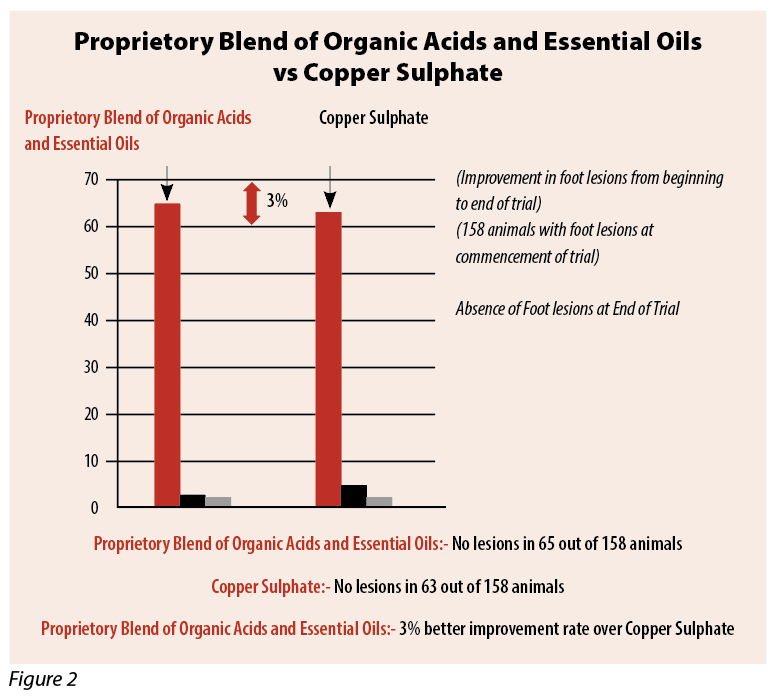Lameness control during winter housing
1st September 2022
With the change in underfoot conditions and increased lameness risk at housing, daily footbathing of cattle is recommended. Vet, veterinary pharmacologist and adviser to Provita Ltd, Dr Tom Barragry, explores the benefits of a proven alternative to copper sulphate and formaldehyde.
Focusing on treatment rather than prevention in dairy lameness management programmes can seriously impact overall herd health – with many indirect implications for metabolic disease and infertility, which ultimately drains farm profits.
Prevention using regular footbaths is key for moving forward, and needs to be carried out 5–7 times a week on all animals. If lameness can be controlled, subsequent financial benefits will be clearly seen.
Digital dermatitis/Mortellaro disease, is one of the most common foot diseases attributable to lameness and is virtually impossible to eradicate once it appears clinically on farm. Hooves soaked constantly in slurry show an increased incidence of this disease and it can predispose animals to heel horn erosion (‘slurry heel’).
Because of the change in underfoot conditions and the increased incidence of lameness during housing, it is essential to apply a footbath daily to housed cattle. This is a really worthwhile investment because it helps to prevent the appearance of lesions of DD, which act as a huge reservoir of infectious bacteria.
A preventative approach
Using a safe, effective, proven and ‘green’ product like Provita’s Hoofsure Endurance is the proper preventive approach; it significantly reduces the incidence of clinical lesions and thus the spread of infection across the herd. UK field reports indicate that foot bathing with Hoofsure Endurance after every milking reduced lameness by 50% over several months.
It is an environmentally friendly, holistic, viable and proven alternative to copper and formalin. Its positive effects have been widely documented in peer reviewed scientific literature. It is a combination of organic acids, tea tree oil (TTO), and wetting agents.
Organic acids are known to be very effective antibacterial agents with various modes of action. Tea tree oil is naturally antimicrobial and anti-inflammatory, and uniquely degrades bacterial biofilm, which is the protective shield below which bacteria can replicate and invade further into the hoof. It is also a major mechanism of clinical resistance to antimicrobials. Very few veterinary products are effective against bacterial biofilm and this effect presumably explains the high field success rate of Hoofsure Endurance. It possesses unique penetrating action and modifies the local pH of the hoof, and stimulates healthy cell growth and keratinisation.
Published studies show that Hoofsure Endurance was more effective than copper or formalin against bacteria, had a quicker onset of action, and was more effective in the presence of organic matter in lab studies (see figures 1 and 2 for summary).
Hoofsure Endurance has been proven to reduce lameness by 44% compared to copper and formaldehyde. It is also much safer for the animal and user when compared to traditional options such as copper and formalin, and is biodegradable in the environment. Copper and formalin footbaths have numerous problems; copper is toxic to animals and to the environment, formalin is carcinogenic and irritant, and its fumes should be avoided.
Provita has developed a new improved formula, which is 33% faster acting bacterial kill and provides more contact time on the hoof. It is also cost-effective with 5,000 cow passes achievable per 20-litre drum (in 200-litre footbath).
The range also includes a gel, Hoofsure Konquest, to be applied to larger lesions with or without a bandage at the first signs of lameness. It has advanced bio-adhesion properties which help the gel stick to the skin and hoof. For immature lesions, non-antibiotic spray Hoofsure Combat is a unique film-forming spray containing TTO and organic acids, providing persistent longer-lasting activity. Combat should be used for spot spraying in parlour or during hoof trimming. It provides a waterproof, breathable film which promotes natural healing.
*References available on request.



